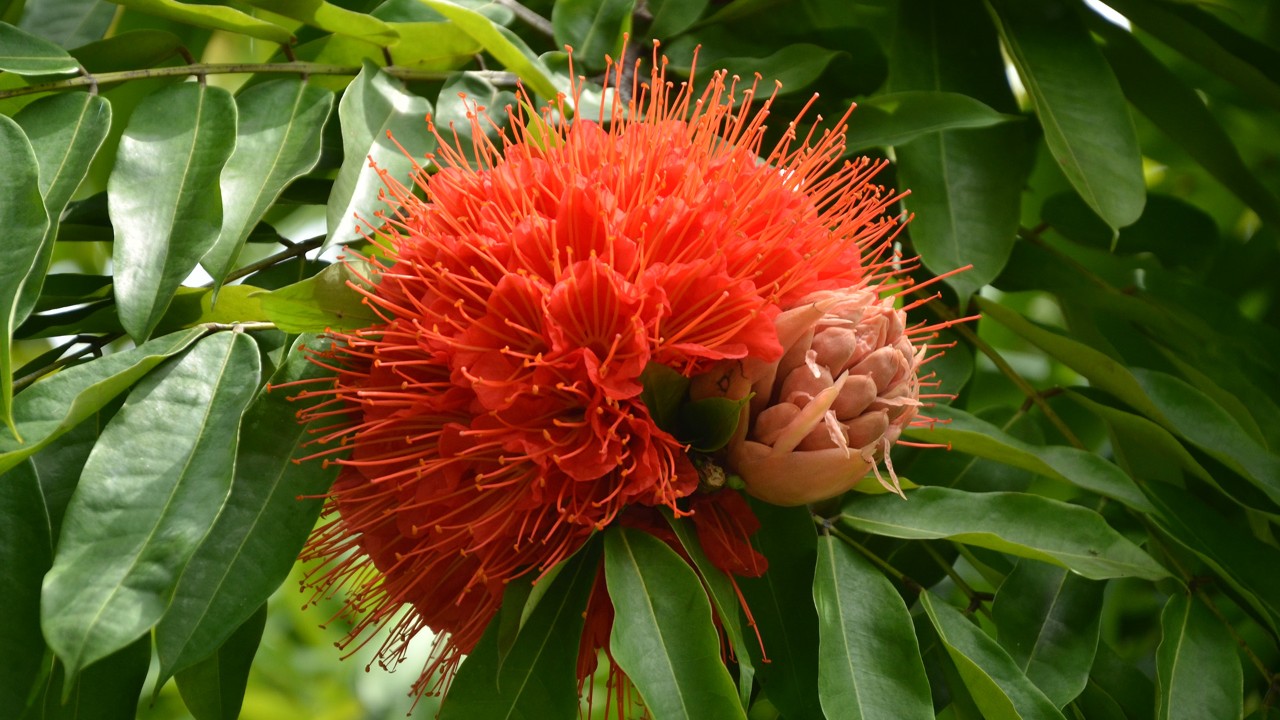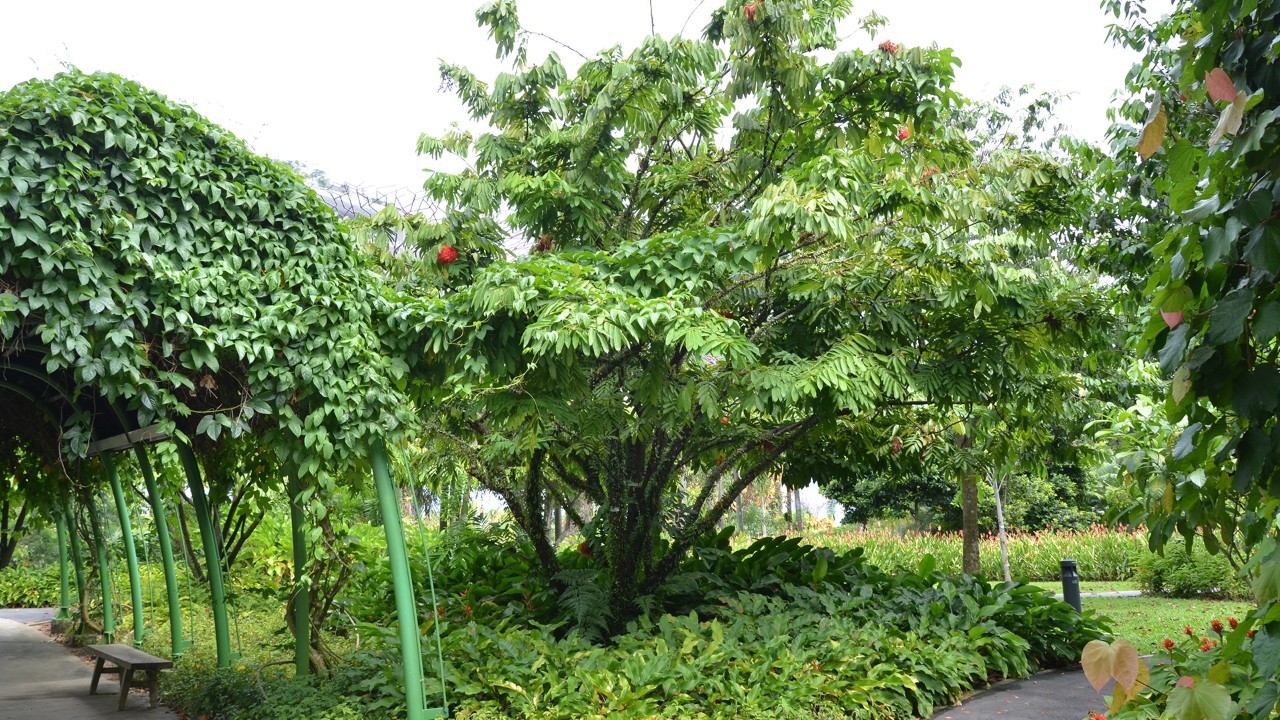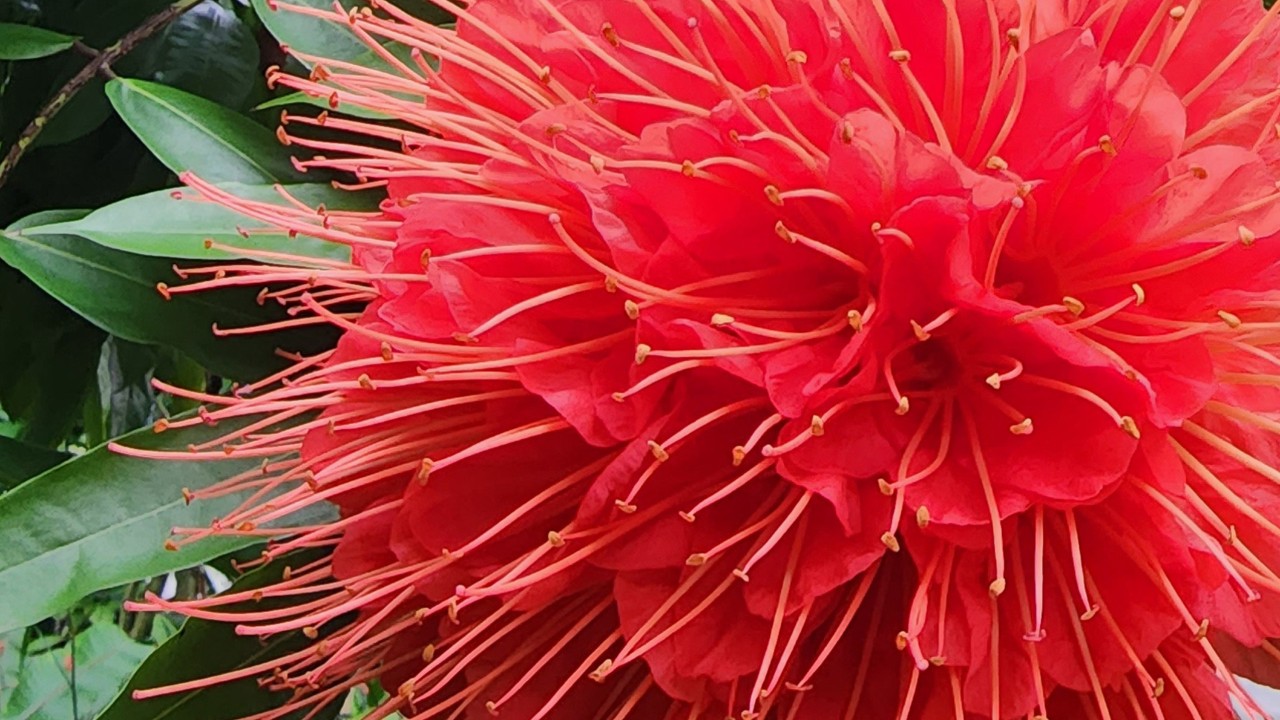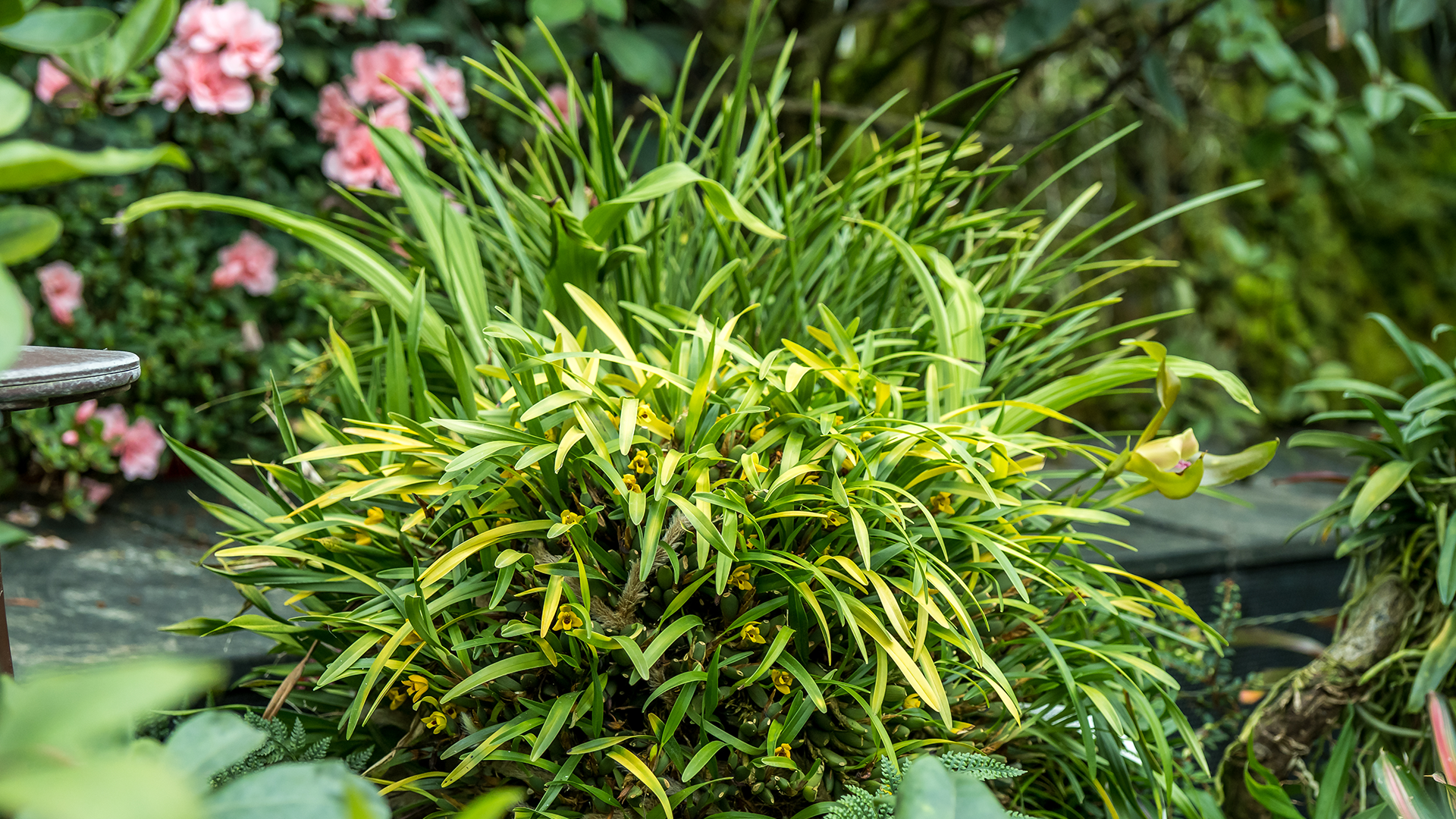
When you think of a tree, what first comes to mind? The tiered, evergreen conifers of temperate boreal forests? The towering dipterocarps of South and Southeast Asian tropical rainforests? The wide, spreading, umbrella-like raintrees of South and Central America and Singapore’s streets? Even the slim, naked trunk and huge, feathery leaves of a coconut tree (actually not a tree at all, but a palm)?
 Rose of Venezuela (center) is a very short understorey tree with long, spreading branches that it likes to rest on those of its neighbors.
Rose of Venezuela (center) is a very short understorey tree with long, spreading branches that it likes to rest on those of its neighbors.
Height is one of the primary characteristics used to define a tree, yet the rose of Venezuela (Brownea macrophylla) barely fulfills that requirement only reaches up to 10m, and is more commonly found just at 4-6m tall! Native to the tropical rainforests from Columbia to Peru, including Venezuela, these and other short-statured trees species fill an important ecological niche as understorey trees. Living in the shade of the forest giants, these small trees provide food and shelter to the wildlife that lives near to the ground. In its native habitat, it is sometimes described as a loosely ‘viny tree’ that rests its branches on those of its neighbors, forming a dark, dense canopy.
Its dense flower clusters are produced mainly on the tree trunk or branches instead of new growth; a phenomenon called cauliflory. This allows pollinating or seed-dispersing animals easy access to the flowers and fruit. In the dim light of the dense undergrowth, flowers must stand out to be seen at all, and living up to its common names of rose of Venezuela and Panama flame tree, this species produces big, spherical, scarlet-red flower clusters that stand out in striking contrast!
 Rose of Venezuela produces large, globular flower clusters densely-packed with bright red, tubular flowers to attract pollinating hummingbirds.
Rose of Venezuela produces large, globular flower clusters densely-packed with bright red, tubular flowers to attract pollinating hummingbirds.
Like most tubular, red flowers, it is bird-pollinated and in its native range, the nectar-rich flowers are visited by several hummingbird species. Like other members of the large legume/bean Fabaceae family, its fruit is a flattened, woody pod rarely seen in Singapore, perhaps due to the lack of proper pollinators, as there are no reports of the native sunbirds being attracted to this tree. Curious to see it for yourself? Find this understorey tree in our Understorey garden at World of Plants and let us know if you do see any sunbirds hovering around its blooms!
Written by: Janelle Jung, Senior Researcher (Research and Horticulture)
A transplanted pake (Hawai'i-born Chinese), she's finding her own Singaporean roots. Every plant has a story, and Janelle helps discover and share these with colleagues and guests, hoping to spark a mutual plant passion! Ask her what plant she named her cat after!


/1000x1000-thumb-peruvian-wild-petunia.jpg)
